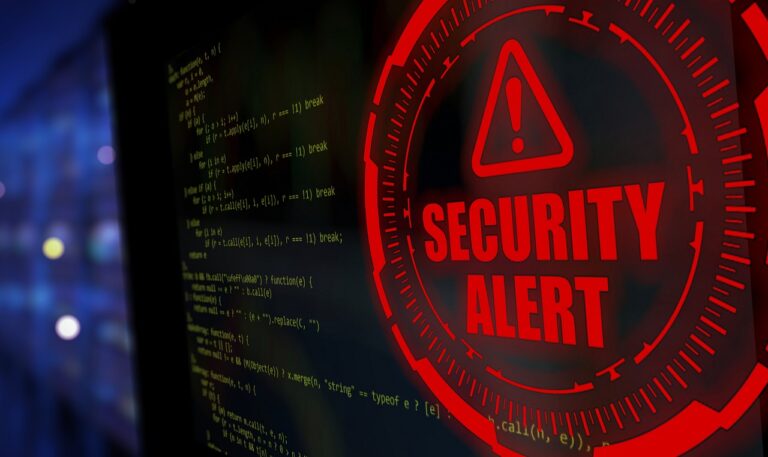How Does A Code Signing Certificate Work?
You may have come across the term “code signing certificate” before, but do you actually know how it works? In this article, we will demystify the workings of a code signing certificate and explore its crucial role in ensuring the integrity and security of software applications. By digitally signing code, developers are able to establish trust with users, guarantee that the code has not been tampered with, and verify the authenticity of the software. Join us as we unravel the intricacies of code signing certificates and uncover their significance in the world of technology.
What is a Code Signing Certificate
A code signing certificate is a digital certificate that is used to authenticate the source and integrity of software by applying a cryptographic digital signature. It ensures that the software being distributed has not been tampered with and can be trusted by users. This certificate is issued by a trusted Certificate Authority (CA) and is an essential component in the software development and distribution process.
Definition of a Code Signing Certificate
A code signing certificate is a digital certificate that is used to sign software with a unique digital signature. This signature acts as a fingerprint, identifying the software and its developer. When a user installs or runs the software, their operating system can verify the signature and ensure that the software has not been modified or tampered with since it was signed.
Purpose of a Code Signing Certificate
The main purpose of a code signing certificate is to establish trust between software developers and users. By digitally signing their software, developers can assure users that the software has not been compromised and comes from a known and trusted source. This helps prevent users from unknowingly installing malware or untrusted applications on their devices.
Why Use Code Signing Certificates
Ensuring Software Authenticity
One of the key reasons to use a code signing certificate is to ensure the authenticity of your software. By signing your code, you are providing an assurance to users that the software has not been tampered with or altered since it was signed. This can help prevent malicious actors from injecting malware or making unauthorized modifications to your software.
Establishing Trust with Users
Code signing certificates also play a crucial role in establishing trust with users. When users see that a software is signed, they can have confidence that it comes from a verified source and has not been compromised. This can help increase user trust in your software, leading to more installations and usage.
Components of a Code Signing Certificate
Public Key Infrastructure (PKI)
A code signing certificate is built upon the foundation of Public Key Infrastructure (PKI) technology. PKI is a system that uses cryptographic techniques to secure digital communications and verify the authenticity of digital documents. It includes the use of public and private key pairs, digital signatures, and Certificate Authorities.
Digital Signature
The digital signature is the core component of a code signing certificate. It is a cryptographic hash that is created using the private key of the software developer. This hash is unique to the software and acts as a fingerprint. When a user installs or runs the software, their operating system can verify the digital signature using the public key associated with the certificate.
Certificate Authorities (CAs)
Certificate Authorities are trusted third-party organizations that issue code signing certificates. They are responsible for verifying the identity of the software developer and ensuring that the certificate is valid. CAs use their own private key to sign the code signing certificate, establishing their trustworthiness. Operating systems and devices have a list of trusted CAs, and they will only accept code signing certificates from these trusted sources.
Generating a Code Signing Certificate
Creating a Certificate Signing Request (CSR)
To obtain a code signing certificate, the software developer needs to create a Certificate Signing Request (CSR). This request includes information about the developer and the software, such as their name, organization, and the purpose of the certificate. The CSR also contains the public key that will be used to sign the software.
Submitting the CSR to a CA
Once the CSR is created, it needs to be submitted to a trusted Certificate Authority. The CA will review the information provided and validate the identity of the software developer. This verification process may involve checking business registrations, domain ownership, and other relevant information. Once the CA is satisfied with the verification, they will issue the code signing certificate.
Verification and Issuance
During the verification process, the CA will check the authenticity of the information provided in the CSR. This ensures that the software developer is who they claim to be and has the right to sign the software. Once the verification is complete, the CA will issue the code signing certificate, which includes the developer’s information, the public key, and a unique digital signature from the CA.
Signing Software with a Code Signing Certificate
Adding a Digital Signature to Software
To sign software with a code signing certificate, the software developer uses a signing tool provided by the operating system or development environment. The signing tool takes the code signing certificate and private key and applies a digital signature to the software files. This signature is embedded within the software and can be verified by the operating system or device when the software is installed or executed.
Integrating the Certificate into the Software Build Process
To ensure a streamlined signing process, many software development workflows integrate the code signing certificate into the build process. This involves automating the signing process so that every build of the software is signed with the code signing certificate. By incorporating the certificate into the build process, developers can ensure that every copy of the software is signed and ready for distribution.
Verifying the Code Signing Certificate
User’s Perspective
From a user’s perspective, verifying a code signing certificate is a seamless process. When a user attempts to install or run signed software, their operating system automatically verifies the digital signature embedded within the software. If the signature is valid and the certificate is trusted, the software installation or execution proceeds without any warnings or errors. This provides users with confidence that the software is from a trusted source.
Operating System Validation
Operating systems maintain a list of trusted Certificate Authorities and their corresponding public keys. When a code signing certificate is verified, the operating system checks if the CA that issued the certificate is trusted. If the CA is trusted, the operating system verifies the signature using the CA’s public key. If the signature is valid, the operating system proceeds with the installation or execution of the software.
Certificate Revocation
In some cases, a code signing certificate may be compromised or the software developer’s status may change, rendering the certificate invalid. To address this, Certificate Authorities maintain Certificate Revocation Lists (CRLs) or use Online Certificate Status Protocol (OCSP) to indicate the revocation status of certificates. When a code signing certificate is checked, the operating system also verifies if the certificate has been revoked before proceeding with the installation or execution.
Benefits and Importance of Code Signing Certificates
Protection Against Malicious Tampering
Code signing certificates provide protection against malicious tampering of software. By signing the software with a unique digital signature, any modifications or alterations to the software can be detected. This helps prevent the distribution and installation of unauthorized or tampered software, protecting users from potential malware or security risks.
Enhanced User Trust
When users see that a software is signed with a reputable code signing certificate, it enhances their trust in the software and the developer. They can be confident that the software has been verified and comes from a trusted source. This can result in increased adoption and usage of the software, as users are more likely to install and rely on signed applications.
Reducing Security Warnings
When software is not signed with a valid code signing certificate, users may encounter security warnings or alerts when attempting to install or run the software. These warnings can create doubt and hesitation, discouraging users from proceeding with the installation. By utilizing a code signing certificate, developers can avoid these security warnings, providing a smoother and more trusted user experience.
Code Signing Certificate Best Practices
Choosing a Trusted CA
When obtaining a code signing certificate, it is essential to choose a trusted Certificate Authority. A reputable CA ensures that the certificate issuance process is secure and performs rigorous verification of the software developer’s identity. By selecting a trusted CA, developers can increase user trust in their software and avoid potential security risks associated with untrusted or unauthorized certificates.
Proper Key Management
To maintain the security and integrity of code signing certificates, proper key management practices should be followed. This includes securing the private key associated with the certificate, using strong passwords or hardware tokens for access control, and regularly updating and rotating the key. By implementing robust key management practices, developers can prevent unauthorized access and ensure the validity of their signed software.
Regular Certificate Renewal
Code signing certificates have an expiry date, and it is crucial to renew them before they expire. Regularly renewing certificates ensures that the signed software remains valid and trusted. Developers should keep track of the certificate expiry date and plan ahead for the renewal process to avoid any interruptions in software distribution.
Code Signing Certificates for Different Platforms
Windows
Code signing certificates are commonly used for Windows applications and software. Microsoft requires developers to sign their Windows executable files to ensure their authenticity and integrity. By signing their software with a code signing certificate, developers can avoid warning prompts and increase user trust in their Windows applications.
macOS
Similar to Windows, macOS also supports the use of code signing certificates. Apple mandates the use of code signing for applications distributed through their Mac App Store and Gatekeeper security feature. By signing their macOS applications, developers can ensure they meet Apple’s security requirements and enable smoother installations for users.
Android
Code signing certificates are essential for Android developers who distribute their applications through the Google Play Store. Google requires all apps to be signed with a code signing certificate to establish trust and verify the integrity of the software. By signing their Android applications, developers can prevent unauthorized distribution and provide users with a trusted app installation experience.
iOS
For developers targeting iOS devices, code signing certificates are necessary to distribute applications through the Apple App Store. Apple enforces code signing as part of their app review process, ensuring the authenticity and integrity of iOS applications. By signing their iOS applications, developers can comply with Apple’s requirements and enhance user trust in their apps.
Conclusion
In today’s digital landscape, where software is vulnerable to various threats, code signing certificates play a crucial role in establishing trust and ensuring the authenticity of software. By signing their applications with a code signing certificate, developers can protect users from malware, enhance their reputation, and provide a smoother and more trusted user experience. Implementing best practices, such as choosing a trusted CA and regularly renewing certificates, further strengthens the security and reliability of the code signing process. Whether it’s Windows, macOS, Android, or iOS, code signing certificates are a fundamental tool for developers to build user trust and protect their software.








